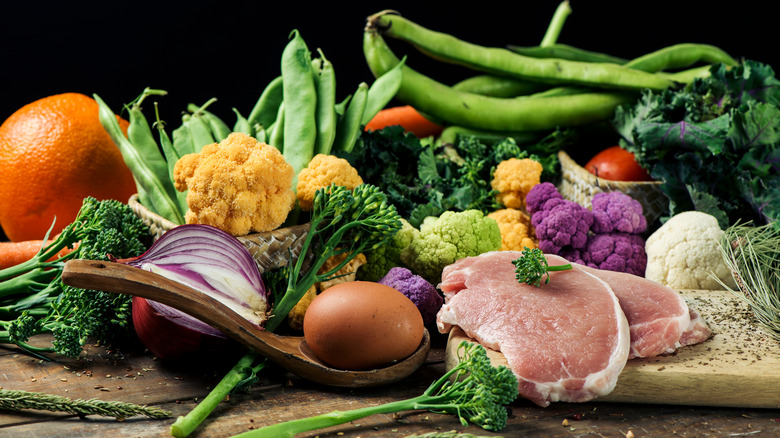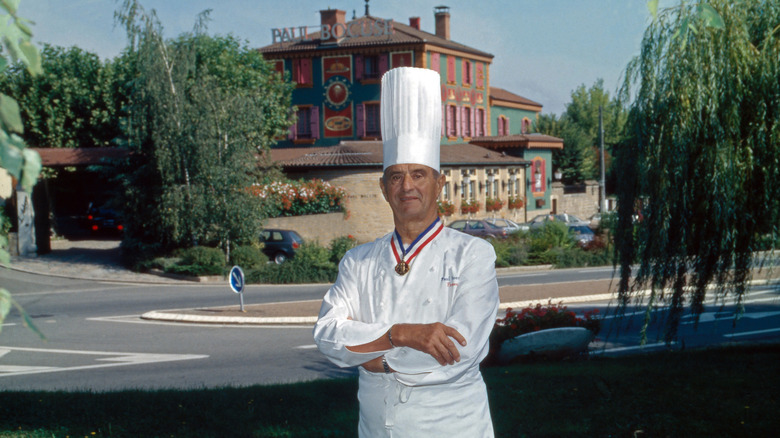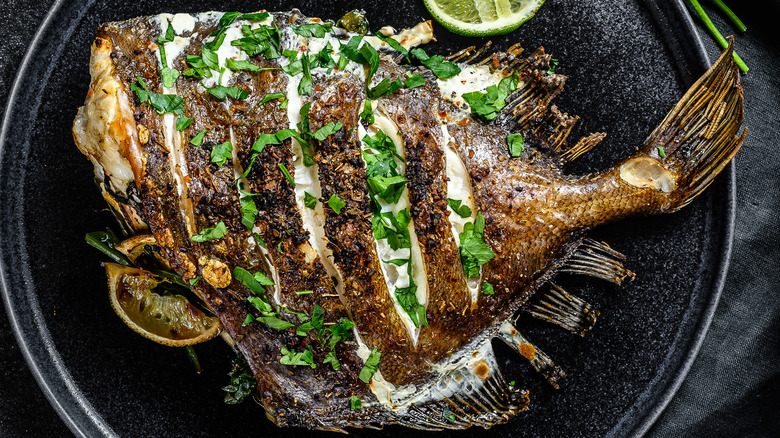What Is 'Nouvelle' Cuisine? (And How You Can Spot It At Fine Dining Restaurants)
Humans have been mastering the art of cooking since our ancient ancestors first thought of tossing a hunk of meat over a smoldering fire. Since then, food's evolution has been ceaseless, with every culture inventing its own unique combinations of tastes and textures.
Today, culinary innovators have taken dinner to some pretty incredible places. The scientific, sensory-focused field of molecular gastronomy has resulted in some truly iconic dishes, like a cubed deconstruction of eggs Benedict and a multilayered potato soup dish that brings life to the childhood game Hot Potato. Total Food Service notes that other recently introduced food techniques include sous-vide cooking, which involves vacuum sealing ingredients in plastic and braising them in a hot water bath, and engastration, a fancy word that means jamming one food into another — take the Thanksgiving titan known as the turducken, for example. However, there is another style of cuisine that rejects modern flare, instead opting to focus on simple flavors.
The history of 'nouvelle' cuisine
According to Fine Dining Lovers, nouvelle cuisine was first introduced to the world by French master chef Paul Bocuse, who in 2011 was awarded "Chef of the Century" by the Culinary Institute of America, years after being labeled "Cook of the Century" by Gault et Millau, a French restaurant guide, in 1989. The concept of nouvelle cuisine is credited to the guide's co-founder Henri Gault, who coined the term to describe the food Bocuse cooked for the passengers on Concorde's first passenger flight in 1969.
Essentially, the tenets of nouvelle cuisine, as they are understood by Gault et Millau, can be broken down into 10 parts. These tenets tell us that nouvelle cuisine, while still allowing for modern technology and bold flavor profiles, emphasizes fresh, simple, sustainable ingredients, more delicate meat preparation, and a general lack of complication for its dishes. The philosophy behind this style of cooking is perhaps best encapsulated by the third commandment of nouvelle cuisine, "Thou shalt lighten thy menu" (per Connexion France).
Where can you find delicious nouvelle dishes?
But is nouvelle cuisine the next big thing? It's entirely possible! Though it can, at times, be difficult to differentiate between a nouvelle dish and that of another type of cooking, remembering the 10 commandments of nouvelle cuisine that Connexion France, citing Gault et Millau, provides can help you keep an eye out for particular ingredients. The sixth and seventh commandments are "Thou shalt avoid pickles, cured game meats, fermented foods, etc," and "Thou shalt eliminate rich sauces," respectively.
Discover Luxury lists several chefs that are currently crafting dishes in the tradition of nouvelle cuisine, and delves into some delicious-sounding meals that these culinary entrepreneurs prepared in the style. Traditionally, carbonara is a pasta dish that features a fatty, indulgent sauce made of egg yolks and cheese, which is paired with cured pork cheek, or guanciale. Iñaki Aizpitarte, the chef at Le Chateaubriand in Paris, created the delicate "carbonara of the sea," a nouvelle dish of fresh John Dory fish served on a potato base with a light and simple sauce. Christophe Saintagne, at his bistro Papillon, changes the menu to coincide with the availability of certain foods and is a practitioner of sustainable food sourcing. He took the nouvelle mission of simplifying cuisine quite seriously — there are only three ingredients in each Papillon dish.


